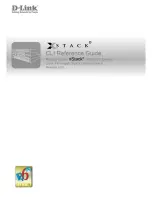
Operation Manual – IPv4 Routing
H3C S3610&S5510 Series Ethernet Switches
Chapter 2 RIP Configuration
2-3
2.1.2 Operation of RIP
The following procedure describes how RIP works.
1)
After RIP is enabled, the router sends Request messages to neighboring routers.
Neighboring routers return Response messages including information about their
routing tables.
2) After receiving such information, the router updates its local routing table, and
sends triggered update messages to its neighbors. All routers on the network do
the same to keep the latest routing information.
3)
By default, a RIP router sends its routing table to neighbors every 30 seconds.
4)
RIP ages out routes by adopting an aging mechanism to keep only valid routes.
2.1.3 RIP Version
RIP has two versions, RIPv1 and RIPv2.
RIPv1, a classful routing protocol, supports message advertisement via broadcast only.
RIPv1 protocol messages do not carry mask information, which means it can only
recognize routing information of natural networks such as Class A, B, C. That is why
RIPv1 does not support discontiguous subnets.
RIPv2 is a classless routing protocol. Compared with RIPv1, RIPv2 has the following
advantages.
z
Supporting route tags. Route tags are used in routing policies to flexibly control
routes.
z
Supporting masks, route summarization and Classless Inter-Domain Routing
(CIDR).
z
Supporting designated next hops to select the best next hops on broadcast
networks.
z
Supporting multicast routing update to reduce resource consumption.
z
Supporting plain text authentication and MD5 authentication to enhance security.
Note:
RIPv2 has two types of message transmission: broadcast and multicast. Multicast is
the default type using 224.0.0.9 as the multicast address. The interface working in the
RIPv2 broadcast mode can also receive RIPv1 messages.
2.1.4 RIP Message Format
I. RIPv1 message format
A RIPv1 message consists of a header and up to 25 route entries.
















































